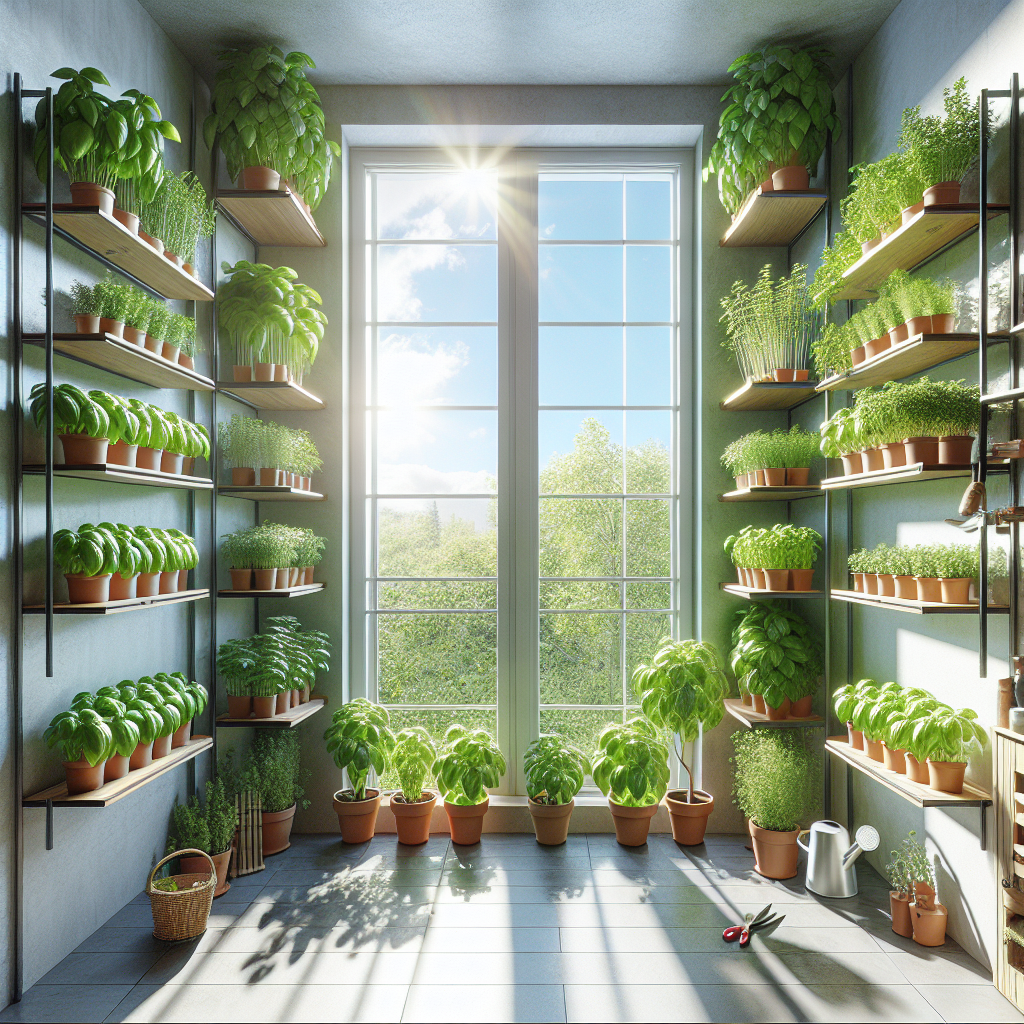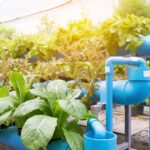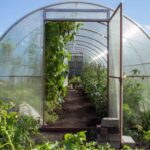
The Urban Gardener’s Guide to Growing Basil Indoors
When you think of a lush garden, you might imagine sprawling greenery that requires acres of land. But here’s a little secret: you can create a vibrant herb garden right in your urban dwelling, starting with one of the most beloved herbs – basil. Growing basil indoors is not only doable; it’s a delightful way to bring fresh flavors to your kitchen and greenery to your living space.
Maximizing Space for Your Herb Haven
Space is a luxury in the city, but don’t let that stop you from cultivating your green thumb. With a bit of creativity, even the tiniest apartment can support a thriving basil plant. First, identify sunny spots – a windowsill, a balcony ledge, or even a well-lit countertop can become the perfect home for your herb. Use hanging planters or wall-mounted pots to take advantage of vertical space, and consider stackable planters if you’re ready to expand your indoor garden.
Selecting the Perfect Basil Varieties for Your Indoor Garden
- Sweet Basil – The classic choice for pesto and Italian dishes.
- Thai Basil – A must-have for its unique anise-like flavor in Asian cuisine.
- Purple Basil – Offers a stunning visual with a slightly spicier taste.
- Lemon Basil – Brings a citrusy twist to salads and seafood.
- Small-leafed Basil – Perfect for smaller pots and limited space.
Each variety has its own charm and flavor profile, so consider what dishes you love to cook and choose accordingly. Remember, some basil plants can grow quite large, so for indoor gardening, smaller varieties might be your best bet.
Gathering Supplies: The Essentials List
Before you get your hands dirty, let’s make sure you have everything you need. Here’s a quick checklist:
- Quality basil seeds or starter plants.
- Containers with drainage holes.
- Potting mix designed for herbs or vegetables.
- A watering can or bottle with a narrow spout.
- Natural light or a grow light setup.
These essentials will set the foundation for your indoor basil garden. Remember, healthy plants start with quality supplies, so don’t skimp on the basics.
Key Takeaways: Article-at-a-Glance
- Urban spaces can be transformed into productive herb gardens with a little ingenuity.
- Choosing the right variety of basil is crucial for indoor gardening success.
- Vertical gardening solutions are perfect for making the most of limited space.
- Assembling the right supplies beforehand makes the planting process smoother.
- Even in a high-rise, you can enjoy the taste and aroma of freshly grown basil.
Step-by-Step: Planting Your Indoor Basil
Now that you’ve got your supplies, let’s get planting. Begin by filling your containers with the potting mix, leaving about an inch of space at the top. Scatter a few basil seeds over the surface or plant your starter plant, then lightly cover with more potting mix. Water gently but thoroughly, ensuring the soil is moist but not waterlogged. Place your pot in a spot where it will get at least six hours of sunlight a day, or under a grow light if natural light is scarce.
Keep the soil consistently moist as your basil seeds germinate and grow. You’ll see sprouts in as little as five to ten days. When your basil plants have a few sets of true leaves, you can start to thin them out, leaving the strongest seedlings to grow into full plants. This ensures your basil has enough room to flourish, even in the coziest of urban spaces.
Remember, patience is key. Plants have their own pace, and as an urban gardener, your role is to provide the best care and let nature do the rest. Soon enough, you’ll have lush, aromatic basil leaves ready to enhance your culinary creations.
Choosing the Right Containers
The container you choose is more than just a home for your basil; it’s a crucial factor in ensuring your plant’s health and productivity. Opt for pots that are at least 6 inches deep to accommodate the roots, with drainage holes to prevent water from pooling at the bottom. If you’re short on space, consider long window boxes that can sit on a sill or be hung outside a window. For those who love a bit of DIY, upcycled containers like mason jars or old cans can add character to your urban garden, just be sure to add holes for drainage.
Perfecting Your Potting Mix: A Recipe for Success
Your basil’s growth is only as good as the soil it’s planted in. A well-draining, nutrient-rich potting mix is vital. Mix two parts potting soil with one part perlite or coarse sand to improve drainage. If you want to give your basil a head start, mix in some compost or worm castings for an extra boost of nutrients. This combination will ensure that your basil’s roots have the perfect balance of moisture and aeration.
Nurturing Your Basil Plants to Thrive
Caring for your basil plants is a rewarding routine that doesn’t require much time but does need consistent attention. Regularly check the soil’s moisture, look out for signs of growth or distress, and be vigilant about the lighting conditions. Rotate your plants if they’re reaching for the light to encourage even growth. With your nurturing, your basil will grow lush and tall, ready for you to enjoy.
Mastering the Art of Watering
Watering is an art form when it comes to indoor plants. Basil likes to stay moist but despises soggy feet. The key is to water little and often. Touch the top inch of soil, and if it’s dry, it’s time to water. Use a watering can with a long spout to avoid splashing the leaves and to target the water directly to the soil. Be mindful of the temperature and humidity in your home, as these can affect how quickly the soil dries out.
Ensuring Adequate Light for Vigorous Growth
Light is the lifeblood of your basil plants. They thrive in bright, indirect sunlight for at least six hours a day. If your indoor space doesn’t get enough natural light, don’t worry – grow lights are a fantastic alternative. They can provide the full spectrum of light that basil needs to photosynthesize and grow. Place the lights close enough to mimic the sun but far enough away to prevent overheating your plants.
Temperature & Humidity: Creating the Ideal Microclimate
Basil loves warmth and a bit of humidity, much like its native tropical climate. Aim to keep your indoor garden at a cozy 70°F (21°C) during the day, slightly cooler at night. If your home is dry, especially in the winter months, consider using a small humidifier or placing a tray of water near your plants to increase humidity. These conditions will help your basil plants feel right at home and ensure they grow strong and healthy.
Overcoming Indoor Gardening Challenges
Indoor gardening is a fantastic way to bring nature into your home, but it comes with its own set of challenges. Limited space, less airflow, and proximity to your living area can make pest management and disease control a bit trickier. However, with some preventative measures and quick action, you can keep your indoor basil healthy and thriving.
Managing Pests and Diseases in a Confined Space
Pests love plants, and your indoor basil is no exception. Keep an eye out for common culprits like aphids, spider mites, and whiteflies. The good news is, in a smaller space, it’s easier to spot these pests early on. Regularly inspect your basil, paying close attention to the undersides of leaves. If you do find pests, a gentle spray of soapy water or neem oil can be an effective remedy. As for diseases, ensure good air circulation and avoid overwatering to prevent fungal issues like root rot or powdery mildew.
Dealing with Limited Natural Light
Sunlight can be scarce in some urban homes, but that doesn’t mean your basil has to suffer. If your windows don’t provide enough light, grow lights are a game-changer. They’re affordable and can fit into tight spaces. Position them above your basil plants to simulate natural sunlight, keeping them on for about 10-12 hours a day. This consistent light source will help your basil grow full and lush, even in the darkest corners of your apartment.
Harvesting and Enjoying Your Indoor Basil Bounty
After nurturing your basil plants, the most rewarding part is finally at hand – harvesting. The beauty of growing basil indoors is that you can pick fresh leaves as you need them, ensuring the most flavor for your dishes. But knowing when and how to harvest can make all the difference in prolonging your plant’s productivity and taste.
When to Harvest: Timing for Optimal Flavor
The best time to harvest basil is in the morning, after the dew has evaporated but before the sun is at its peak. This is when the oils that give basil its distinctive aroma and flavor are most concentrated. Snip a few leaves or cut whole stems if you need more, but always leave enough leaves to ensure the plant can continue to grow. Regular harvesting actually encourages more growth and prevents the plant from flowering too soon, which can make the leaves taste bitter.
Preserving Your Basil: From Fresh to Dry
Preserving basil is a great way to enjoy its flavor all year round. For fresh basil at your fingertips, you can store snipped stems in a glass of water on your countertop for a few days. If you have an abundance of basil, drying or freezing are your best bets. To dry basil, hang bunches upside down in a warm, airy place out of direct sunlight. Once dried, crumble the leaves and store them in an airtight container. For freezing, chop the leaves and mix them with water or olive oil in an ice cube tray. Once frozen, transfer the cubes to a freezer bag for long-term storage. This way, you can drop a basil cube directly into your cooking, infusing your meals with homegrown flavor any time of the year.
Expanding Your Indoor Herb Collection
Once you’ve mastered the art of growing basil indoors, you may find yourself yearning to diversify your personal herb garden. Expanding your collection is not only rewarding but also beneficial for your basil plants. Herbs like parsley, chives, and cilantro can share pots with basil, creating a lush and varied mini-garden. Plus, you’ll have a wider array of flavors to enhance your cooking.
Companion Planting: Selecting Herbs That Grow Well with Basil
- Mint – Its vigorous growth can match that of basil, but be sure to give it room to spread.
- Chives – These not only complement basil in the garden but also in culinary uses.
- Parsley – Prefers the same light and water conditions, making them great pot-mates.
- Cilantro – Thrives alongside basil and can be harvested at a similar rate.
- Oregano – A Mediterranean herb that enjoys the same sunny conditions as basil.
When selecting companions for your basil, consider their needs and growth patterns. Herbs that enjoy similar conditions will make for harmonious cohabitation in your indoor garden. Remember to give each plant enough space to breathe and grow, even as you aim to maximize your garden’s variety.
Utilizing Vertical Spaces: Beyond the Windowsill
Don’t let a lack of horizontal space limit your gardening dreams. Vertical gardening is a smart and stylish way to expand your herb collection upwards. Use wall-mounted planters, hanging baskets, or even a DIY trellis to add dimension to your indoor garden. Not only does this save precious counter space, but it also turns your herbs into a living piece of decor. Plus, vertical gardens can be a creative way to divide areas in a small apartment, adding greenery and privacy in one go.
Frequently Asked Questions (FAQ)
Can basil grow indoors all year round?
Absolutely! Basil can thrive indoors throughout the year with proper care. Ensure it receives ample light, consistent watering, and protection from drafts or extreme temperatures. With these conditions met, you can enjoy fresh basil regardless of the season.
How much light does my indoor basil need daily?
Basil loves the sun and requires about 6 to 8 hours of light each day to flourish. If your home doesn’t get enough natural sunlight, consider supplementing with a grow light. This ensures your basil gets the energy it needs to produce those fragrant leaves you love.
What are the common pests that could affect my indoor basil plants?
Even indoors, your basil can be a target for pests. The usual suspects include aphids, which suck the sap from the leaves, leaving them wilted and yellow. Spider mites can also be a nuisance, causing the leaves to speckle and lose color. Whiteflies are another common pest, and you’ll often find them on the underside of leaves. To combat these critters, introduce natural predators like ladybugs, or use a mild soap solution to wash them off the plant. Always inspect new plants before bringing them into your home to prevent an infestation.
How often should I water my indoor basil plants?
Watering your basil plants is all about balance. Overwatering can lead to root rot, while underwatering can stress the plant. As a rule of thumb, water when the top inch of the soil feels dry to the touch. This could mean watering every few days, but it’s important to adjust based on the humidity and temperature of your home. Always water at the base of the plant to avoid wetting the leaves, which can lead to fungal diseases. A consistent watering schedule will keep your basil hydrated and happy.
Can I plant different basil varieties together in the same pot?
Yes, you can plant different basil varieties together, as long as the pot is large enough to accommodate their growth. This can create a beautiful and aromatic display, as well as a convenient way to harvest a variety of flavors for your cooking. Just be sure to give each plant enough space to spread its roots and access the nutrients it needs. If you’re mixing varieties, keep an eye on their growth rates and prune as necessary to ensure one variety doesn’t overshadow the others.
In conclusion, growing basil indoors is not just a possibility; it’s a joyous journey that brings the freshness of the garden into the heart of your urban home. With the right setup, care, and attention, you can cultivate a lush basil garden that thrives in even the smallest of spaces. Remember to choose the right variety for your needs, provide ample light and water, and be vigilant about pests. Embrace the challenges and rewards of indoor gardening, and you’ll find that even a high-rise apartment can be a sanctuary for sustainable living and gourmet cooking. Happy gardening!






